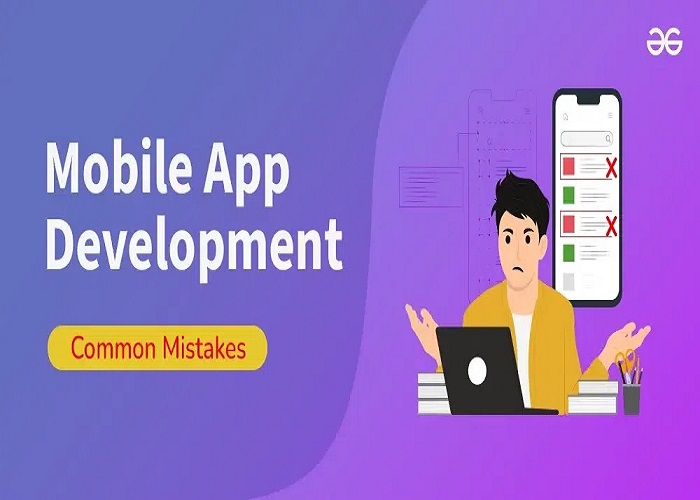Mobile app development has become essential for businesses aiming to engage with customers more effectively. However, building a successful app is no small feat, and many developers encounter pitfalls that can compromise the project’s overall outcome. From technical oversights to strategic missteps, these mistakes can result in wasted resources, missed deadlines, or even app failure.
In this blog, we will explore the some most common mistakes developers make in mobile app development and provide actionable advice on how to avoid them. By being aware of these challenges, you can improve your process and ensure a smoother, more successful app launch.
Failing to Conduct Thorough Market Research
Market research is one of the earliest and most critical steps in app development. Skipping or rushing this phase can lead to low user adoption and engagement rates.
- Why It’s a Mistake: Without a clear understanding of your target audience, competitor landscape, and market trends, your app may fail to meet user needs or differentiate itself.
- How to Avoid It: Take the time to research your target audience. Analyze competing apps to identify gaps in features and user experience. This helps refine your app’s unique selling proposition (USP) and ensure it resonates with the intended users.
Overloading the App with Features
Feature bloat is a common issue in app development. While it’sincluding as many functionalities as possible is tempting, this often results in a cluttered user experience.
- Why It’s a Mistake: Overcomplicating the app can overwhelm users, causing them to abandon it quickly. Additionally, more features mean increased development time, higher costs, and greater maintenance demands.
- How to Avoid It: Focus on a Minimum Viable Product (MVP) approach. Prioritize core features that solve your users’ main problems and roll out additional features gradually based on user feedback.
Neglecting Platform Guidelines
Each mobile platform, whether iOS or Android, has its own set of design and development guidelines. Failing to adhere to these can lead to rejections during app reviews or poor user experience.
- Why It’s a Mistake: Ignoring platform-specific guidelines can result in app rejections by app stores, delaying launch timelines. Additionally, non-compliant apps often feel out of place, lowering user retention.
- How to Avoid It: Review Apple’s Human Interface and Google’s Material Design Guidelines before starting development. Ensuring your app aligns with platform-specific rules improves the likelihood of approval and user satisfaction.
Poor UI/UX Design
An app’s user interface (UI) and user experience (UX) are key to its success. Many developers fail to prioritize this aspect, focusing more on functionality while overlooking ease of use and visual appeal.
- Why It’s a Mistake: A poorly designed app frustrates users, leading to low retention rates and negative reviews. Users expect intuitive, seamless interactions; anything less will push them toward competing apps.
- How to Avoid It: Invest in professional UI/UX designers who understand the nuances of mobile interfaces. Test prototypes with real users to ensure the design is easy to navigate, visually appealing, and aligned with user expectations.
Lack of Testing Across Devices
Testing is essential to mobile app development, but apps are often only tested on a limited range of devices. This can lead to issues when users with different devices encounter bugs or compatibility problems.
- Why It’s a Mistake: Due to the wide variety of Android devices and different iPhone models, failing to test on multiple devices can result in performance inconsistencies, crashes, or unresponsive features.
- How to Avoid It: Ensure comprehensive testing across various devices, screen sizes, and operating systems. This includes testing on both real devices and emulators. Perform regular beta testing to catch bugs before the official release.
Ignoring Performance Optimization
An app’s performance is often overlooked during development. Long loading times, crashes, or battery-draining processes can frustrate users and lead to abandonment.
- Why It’s a Mistake: Poor performance frustrates users and can result in negative app store reviews, which impact visibility and downloads. High resource usage, in particular, is a dealbreaker for mobile users.
- How to Avoid It: Regularly optimize your app for speed and efficiency. Reduce unnecessary background processes, optimize images and code, and minimize API calls. Use tools like Xcode Instruments or Android Profiler to monitor app performance.
Skipping Security Measures
Security is critical in mobile app development, especially for apps that handle sensitive user data. Many developers must implement robust security protocols, leaving apps vulnerable to breaches.
- Why It’s a Mistake: Security flaws can lead to data breaches, eroding user trust and potentially resulting in legal consequences. Even a single breach can destroy an app’s reputation.
- How to Avoid It: Implement strong data storage and transmission encryption methods. Use two-factor authentication (2FA) where applicable and ensure your app complies with data protection regulations such as GDPR or CCPA.
- Underestimating Post-Launch Support
App development doesn’t end once the app is live. Neglecting post-launch support, such as bug fixes and updates, can quickly render your app obsolete.
- Why It’s a Mistake: Without ongoing support, your app can suffer from poor user retention and decreased engagement. Apps that aren’t regularly updated become less compatible with new OS versions and user expectations.
- How to Avoid It: Plan for a long-term support strategy. Release updates regularly to fix bugs, improve features, and ensure compatibility with the latest operating systems. Continuously monitor user feedback for potential improvements.
Failing to Plan for App Scalability
Many developers focus on getting their app to market quickly without considering how it will scale over time. However, as the app gains users, its architecture must handle increased demand.
- Why It’s a Mistake: Without proper scalability planning, apps can suffer from performance issues, crashes, or slow response times as they grow, leading to a poor user experience.
- How to Avoid It: Design your app’s backend to be scalable. Use cloud-based infrastructure, load balancers, and modular code to handle increasing user demand smoothly. Prioritize performance and resource efficiency to manage growth effectively.
Overlooking Marketing and App Store Optimization (ASO)
Developers often focus solely on the technical side of app development, remembering the importance of marketing and app store optimization (ASO). A great app won’t gain traction if users can’t find it.
- Why It’s a Mistake: Without a solid marketing plan, even the best apps may fail to attract downloads. Additionally, poor ASO can prevent your app from ranking high in search results within the app stores.
- How to Avoid It: Develop a marketing strategy well before the app’s launch. Focus on App Store Optimization (ASO) techniques such as keyword research, compelling app descriptions, and high-quality visuals. Engage in social media promotion and content marketing to build awareness and interest.
Conclusion: A Proactive Approach to Mobile App Development
Mobile app development is a complex process with numerous potential pitfalls, but being aware of these common mistakes can significantly improve your chances of success. Thorough market research, attention to user experience, and proper planning for scalability and security are all crucial components of building a high-quality app.
Avoiding these mistakes will save time and resources and improve user satisfaction and long-term engagement. To streamline your app development process, consider working with experienced mobile app development services that can provide the necessary expertise and guidance to navigate these challenges effectively.




